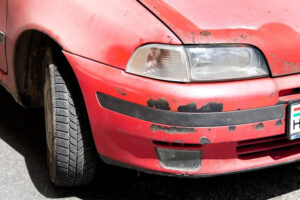Commuting from one place to another doesn’t become a hassle when you own a car. Your vehicle has been helping you commute from one place to another; there’s something you can do for it. By incorporating the simple tips mentioned below, you can keep it in great shape:
Don’t Ignore Rusting

There is one significant thing that you mustn’t compromise on at any cost the rusting. The way the rust looks, it is worse than that. If you notice it coming out of the vehicle’s paint as a bubble, try not to ignore it. The metal needs to be cleaned, filled, and repainted to make the car look spick and span. The more you take them lightly, the worse they’re going to get. Only a qualified technician can come up with a quick fix for the rust spots for the car.
Avoid Tire Overfilling to Obtain Better Mileage
Many testimonials on the internet state that drivers have observed a mileage surge after filling the tires to maximum pressure.No one tells them about the tough ride, premature wear and tear along the surged repair costs that happen due to degraded suspension components. Filling the tires to their maximum pressure is fine when you’re lifting a heavy load. However, you have to take the tire below a recommended pressure once the load is removed.
Using the Wrong Coolant or Antifreeze in Your Car

Whether you’re flushing the car’s cooling system or filling it again after the repair, the right coolant could safeguard the life of the engine and other components. Mixing car coolant with other coolants or using the wrong one could lead to premature failure of the water pump radiator, heater pipes, and heater core. By mixing different coolants, corrosion inhibitors become incompatible with the coolant present in your vehicle. These coolants impede the performance of the corrosion inhibitors present in the old coolants. You won’t be able to notice the damage unless you haven’t covered 5000 miles or higher in your car.
Avoid Mixing Brake Fluid & Power Steering Fluid
You might have seen the DIYers adding power steering fluid in brake fluid which is wrong.Adding the wrong fluid to the power steering or brake could cost you thousands of dollars during repairs, so don’t indulge in them. Power steering fuel swells the seals present in the brakes, and the issue is generally fixed by rebuilding or replacing the master cylinder, calipers, wheel cylinders, and proportioning valve. Perform the double-check before refilling your brake or adding power steering fluid reservoirs in the car.
Don’t Add Universal Fluid to Power Steering or Transmission Systems
Most manufacturers claim that their “Univeral Fluid” works in all car types and models. The reality is the universal fluid must be added based on the specifications instead of greed. The fluid to be added in the car’s transmission or the power steering is generally mentioned in the car’s user manual. You can purchase it from a reputed car parts & accessories store, ‘The Auto Parts Shop,’ bringing top-quality and reasonably priced fluids to you.
Avoid Disconnecting the Battery Cable While Testing the Alternator
At times you might disconnect the battery cable while testing the alternator. In the case of the engine moves, it means that the alternator was working. These things shouldn’t be performed on a modern car or truck. Disconnecting the battery in a moving engine would surge the alternator voltage from 25-to-125-volt
You can diagnose the issue using a voltmeter or take it to the mechanic for a diagnostic test.
Avoid Driving with an Illuminating Oil Light
Every vehicle has a low-pressure warning light that illuminates while driving. An illuminating oil light means that the pressure is low, resulting in oil drop, or is possibly due to clogged oil passage or a failing oil pump is the root cause of the issue. Don’t continue driving when a similar issue arises to pull the car on the side of the road & shut the engine off as promptly as possible. Get inside the hood and check the oil levels using a dipstick. Driving a car when the oil levels are low or completely without oil could lead to costly repairs in the years to come.
Try Not to Use Wrong Oil
If you have a sophisticated model, you need to add the right engine oil for its smooth working. The oil you add significantly impacts the pulse timing and the movement of the camshaft. When left unattended, wrong oil usage leads to an illuminating check engine light, which becomes a serious concern. Stick to the oil recommended by the car manufacturer and take the car for a mechanic inspection if you have added the wrong oil in a car.
The Bottom Line
Avoid doing these things to your car to help it run smoothly, boosting its shelf life. Instead, associate with a trusted car parts store while mending the car issues that have popped up due to these mistakes.
